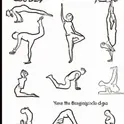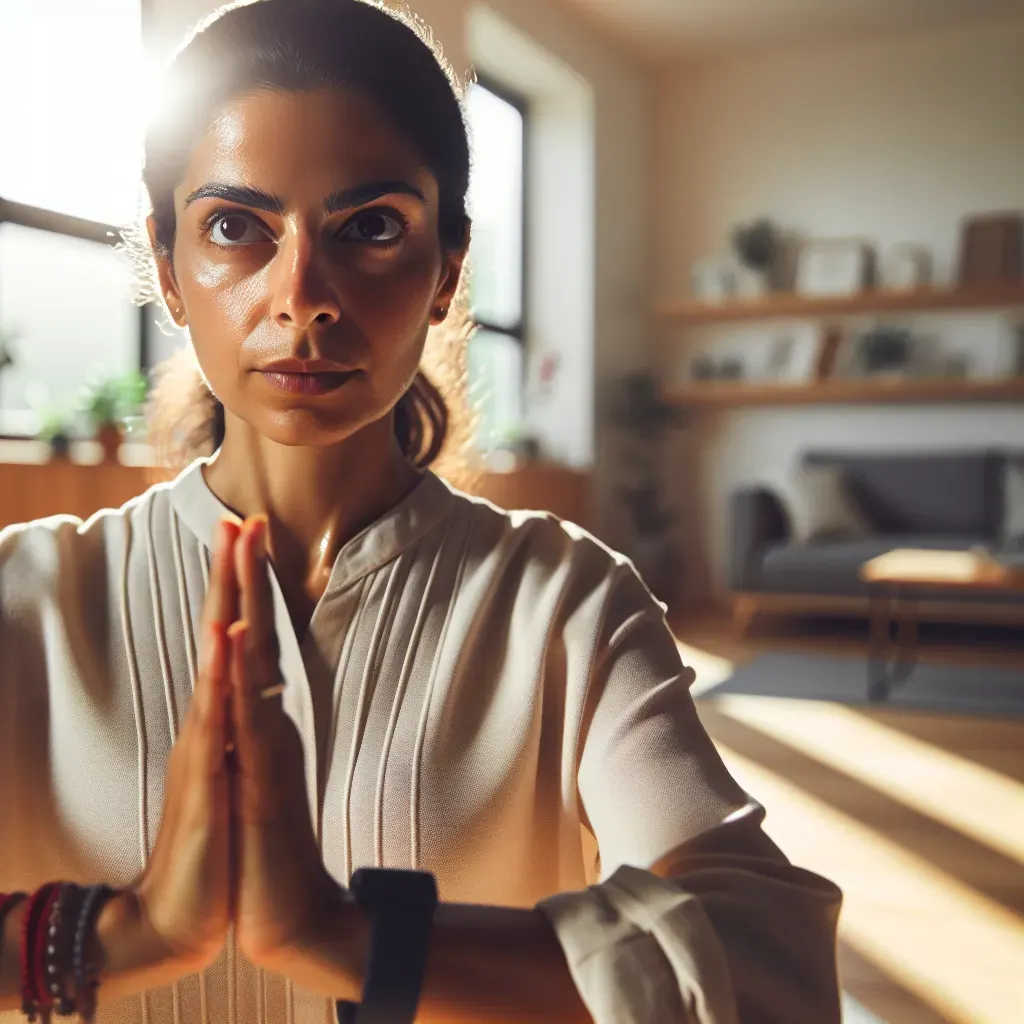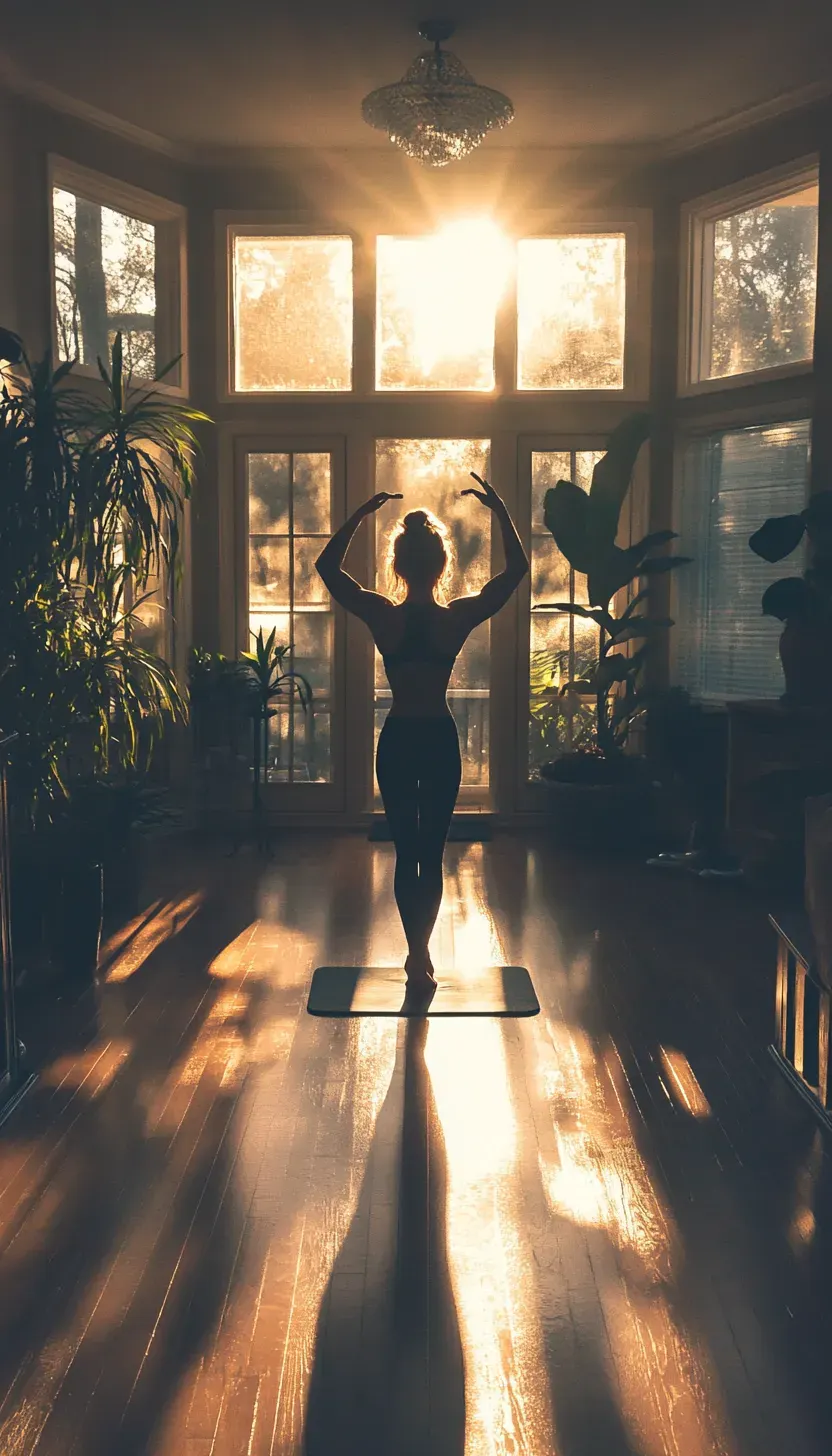10 Beginner-Friendly Yoga Poses to Improve Flexibility and Strength
Yoga has become increasingly popular in recent years, and for good reason.
Not only does it offer a wide range of physical benefits. Including improved flexibility and strength.
But it also has many mental and emotional benefits. Such as stress relief and increased mindfulness.
If you're new to yoga, it can be intimidating to know where to start, but fear not!
There are many beginner-friendly yoga poses. That can help you improve your flexibility and strength.
In this article, we'll explore 10 of these poses, and discuss how they can benefit your body and mind.
Mountain Pose (Tadasana)
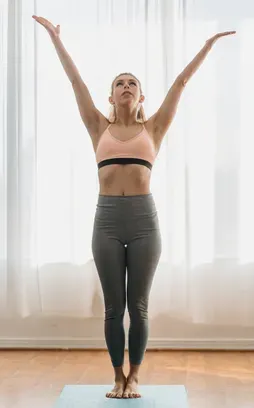
Mountain Pose is a foundational pose in yoga, and it's a great place to start for beginners.
It may look simple, but it requires a lot of engagement. From your muscles to maintain proper alignment. Here's how to do it:
- Stand with your feet hip-width apart and your arms at your sides.
- Press down into all four corners of your feet, engaging your leg muscles.
- Lengthen your spine and lift the crown of your head towards the ceiling.
- Draw your shoulder blades down and back, and engage your core muscles.
- Hold for 5-10 deep breaths.
Mountain pose is a great way to improve your posture and build strength in your legs, core, and back muscles.
Downward-Facing Dog (Adho Mukha Svanasana)
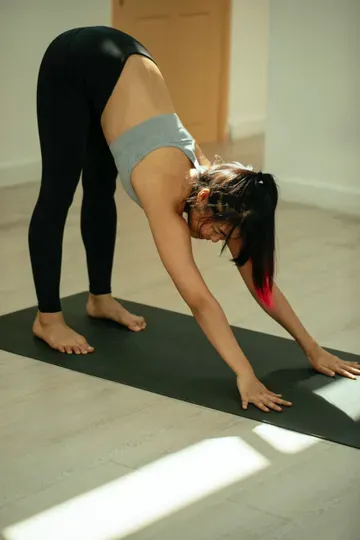
Downward-facing dog is one of the most well-known yoga poses. And it's a great pose for beginners to work on their flexibility and strength. Here's how to do it:
- Start on your hands and knees, with your wrists under your shoulders and your knees under your hips.
- Tuck your toes and lift your hips up and back, coming into an inverted V shape.
- Press down through your hands and feet, and engage your core muscles.
- Hold for 5-10 deep breaths.
A downward-facing dog stretches your hamstrings and calves. While also strengthening your arms, shoulders, and core muscles.
It's a great pose for relieving tension in your neck and shoulders, too.
Warrior II (Virabhadrasana II)
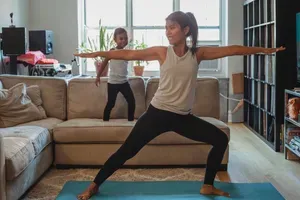
Warrior II is a powerful pose that can help you build strength and stability in your legs. Here's how to do it:
- From Downward-Facing Dog, step your right foot forward between your hands.
- Turn your left foot out 90 degrees, and align your left heel with your right heel.
- Bend your right knee, so that it's directly over your ankle.
- Raise your arms to shoulder height, parallel to the floor, and gaze over your right fingertips.
- Hold for 5-10 deep breaths, and then switch sides.
Warrior II strengthens your quadriceps, hamstrings, and glutes while also improving your balance and stability.
Tree Pose (Vrksasana)

Tree Pose is a balancing pose that can help you improve your focus and concentration, while also strengthening your legs and core. Here's how to do it:
- Stand with your feet hip-width apart and your arms at your sides.
- Shift your weight onto your left foot, and lift your right foot off the ground.
- Place the sole of your right foot on your left inner thigh or calf (avoid placing it on your knee).
- Press your foot into your thigh or calf, and engage your core muscles.
- Bring your hands to your heart center, or raise your arms overhead.
- Hold for 5-10 deep breaths, and then switch sides.
Tree Pose improves your balance and stability, while also stretching your hips and thighs.
Chair Pose (Utkatasana)
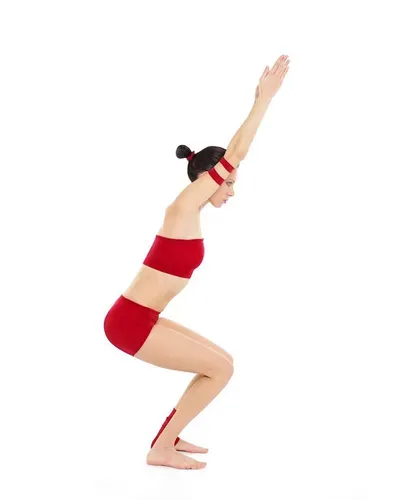
Chair Pose is a challenging pose that can help you build strength in your legs and core. Here's how to do it:
- Stand with your feet hip-width apart and your arms at your sides.
- Inhale and raise your arms overhead, and then exhale and bend your knees, as if you're sitting in a chair.
- Keep your weight in your heels, and engage your core muscles.
- Hold for 5-10 deep breaths.
Chair Pose strengthens your quadriceps, glutes, and core muscles, while also improving your posture.
Cobra Pose (Bhujangasana)
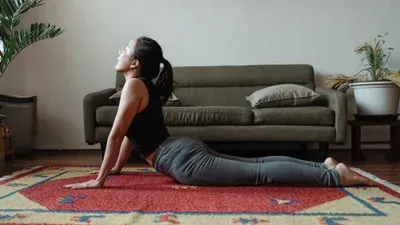
Cobra Pose is a gentle backbend that can help you improve your spinal flexibility and strengthen your back muscles. Here's how to do it:
- Lie on your stomach, with your hands under your shoulders and your elbows close to your sides.
- Inhale and lift your chest off the ground, keeping your shoulders away from your ears.
- Press down through your hands and engage your back muscles.
- Hold for 5-10 deep breaths.
Cobra Pose stretches your chest and abdomen, while also strengthening your back muscles and improving your posture.
Child's Pose (Balasana)
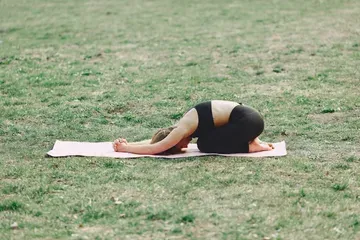
Child's Pose is a relaxing pose that can help you release tension in your back and hips, while also promoting mindfulness and relaxation. Here's how to do it:
- Start on your hands and knees, with your wrists under your shoulders and your knees under your hips.
- Lower your hips back towards your heels, and extend your arms out in front of you.
- Rest your forehead on the ground, and relax your entire body.
- Hold for as long as you like.
Child's Pose stretches your back, hips, and thighs, while also promoting relaxation and stress relief.
Bridge Pose (Setu Bandha Sarvangasana)
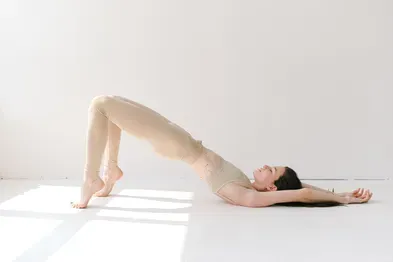
Bridge Pose is a gentle backbend that can help you improve your spinal flexibility and strengthen your back muscles. And here is how to do it:
- Lie on your back, with your knees bent and your feet hip-width apart.
- Place your arms at your sides, with your palms facing down.
- Inhale and lift your hips up towards the ceiling, engaging your glutes and core muscles.
- Hold for 5-10 deep breaths.
Bridge Pose stretches your chest and hip flexors. While also strengthening your back muscles and improving your posture.
Triangle Pose (Trikonasana)
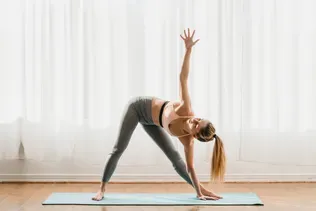
Triangle Pose is a challenging pose that can help you improve your spinal flexibility and strengthen your legs and core. Here i will discuss how to do it:
- Stand with your feet wide apart, with your right foot turned out 90 degrees and your left foot turned in slightly.
- Extend your arms out to the sides, and reach your right hand towards your right ankle or shin.
- Keep your left arm extended towards the ceiling, and gaze up at your left hand.
- Hold for 5-10 deep breaths, and then switch sides.
Triangle Pose stretches your hamstrings and hips. While also strengthening your legs and core muscles.
Corpse Pose (Savasana)
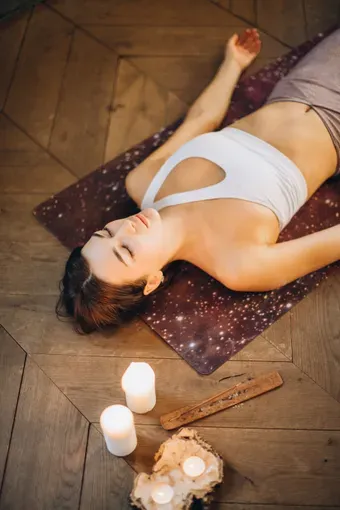
Corpse Pose is a relaxing pose that can help you integrate the benefits of your yoga practice. And promote mindfulness and relaxation. The following is how to do it:
- Lie on your back, with your arms at your sides and your legs extended.
- Close your eyes, and focus on your breath.
- Relax your entire body, and let go of any tension or stress.
- Hold for as long as you like.
Corpse Pose promotes relaxation and stress relief. While also helping you integrate the benefits of your yoga practice.
Conclusion
Practicing yoga can be a great way to improve your flexibility and strength. While also promoting mindfulness and relaxation.
These 10 beginner-friendly yoga poses are a great place to start, and they offer a wide range.
Frequently Asked Questions
Q: I'm new to yoga. Can I really do these poses as a beginner?
A: Absolutely! These poses are beginner-friendly and can be modified to suit your needs. Always listen to your body, and don't push yourself beyond your limits.
Q: How often should I practice these poses?
A: It's recommended to practice yoga 2-3 times a week. But you can start with once a week and gradually increase the frequency as you become more comfortable with the poses.
Q: Do I need any special equipment to do these poses?
A: All you need is a yoga mat and comfortable clothing that allows you to move freely. You can also use props like blocks, blankets, or straps to modify the poses and make them more accessible.
Q: Can these poses help with weight loss?
A: While these poses are not specifically designed for weight loss. Practicing yoga can help you build strength and increase flexibility. Which can support a healthy and active lifestyle.
Q: Can yoga really help with stress and anxiety?
A: Yes, practicing yoga can help reduce stress and anxiety by promoting relaxation and mindfulness. These poses, in particular, promote relaxation and stress relief.
Q: How long should I hold each pose?
A: It's recommended to hold each pose for 5-10 deep breaths, or as long as you feel comfortable. Remember to listen to your body and don't push yourself beyond your limits.
Q: Can I modify the poses if I have injuries or limitations?
A: Yes, you can modify the poses to suit your needs. Always listen to your body and don't push yourself beyond your limits. You can also consult with a yoga teacher or a healthcare professional for guidance on modifications.
Q: Can yoga help with back pain?
A: Yes, yoga can help relieve back pain by improving spinal flexibility and strengthening the muscles that support the spine. Cobra Pose and Bridge Pose, in particular, can help with back pain.
Q: How do I know if I'm doing the poses correctly?
A: It's important to practice yoga with proper alignment to avoid injury and get the most benefits from the poses. You can consult with a yoga teacher or watch online videos to learn proper alignment for each pose.
